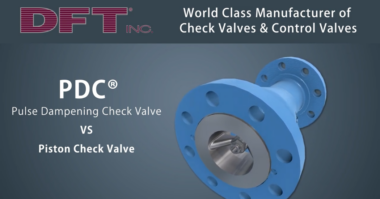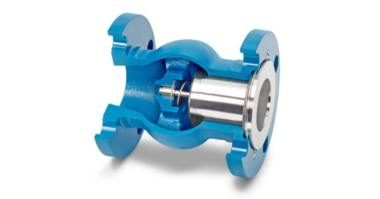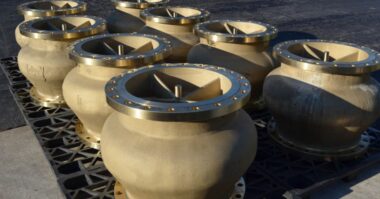There are approximately 4,000 colleges and universities in the USA that host thousands of students, faculty members, and guests every day. These university campuses comprise many buildings, and the larger universities may have hundreds of structures. In all cases, these buildings require heating and cooling that must be properly constructed and maintained.
In most instances, the buildings do not have their own individual heating and cooling systems. Universities tend to have collections of buildings in close proximity to one another. This is an ideal structure for implementing Combined Heat and Power/District Energy Systems.
What Is a District Energy System, and What Role Do Check Valves Play in These Systems?
A District Energy System typically has a central energy plant that generates steam, hot water, and chilled water. The steam is typically produced by a boiler system for heating water. Steam and hot water are distributed through a piping system to campus buildings, providing heat. The central energy system may also have a chiller plant that produces and distributes chilled water to campus buildings for cooling purposes. The heating systems and cooling systems are closed-loop systems that add to their efficiency. District Energy Systems are much more economical and efficient compared to individual heating and cooling systems in each building.
District heating systems typically include the following sections:
- Central Combined Heat and Power System
- Piping distribution system
- Buildings that receive steam, hot water, and/or chilled water
The Role of Check Valves
A Check Valve is a valve that is designed to allow fluid to flow in only one direction. Check Valves prevent fluid from flowing backward in a system. They are common throughout all these systems and play an important role in providing protection to pumps and compressors, as well as preventing reverse flow and water hammer.
Let’s explore the role of Check Valves in Natural Gas delivery systems (gas), Boiler Feed Water systems (water), Boiler Condensate systems (steam to hot water), and general piping systems (hot water and chiller water).
Natural Gas Delivery Systems
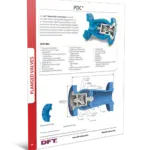 The majority of District Energy Systems use Natural Gas as their fuel source. Natural Gas must be delivered to the Central Plant to heat the boilers to produce steam. DFT® produces a very special Check Valve called the PDC® (Pulse Dampening Chamber), used in Natural Gas compressor stations on reciprocating compressors that maintain the system pressure required to deliver Natural Gas to the Boiler Systems of the District Energy Systems.
The majority of District Energy Systems use Natural Gas as their fuel source. Natural Gas must be delivered to the Central Plant to heat the boilers to produce steam. DFT® produces a very special Check Valve called the PDC® (Pulse Dampening Chamber), used in Natural Gas compressor stations on reciprocating compressors that maintain the system pressure required to deliver Natural Gas to the Boiler Systems of the District Energy Systems.
Steam and Boilers
Before hot water can be produced for distribution to university buildings, steam must be generated. Steam is generated by boilers. Boilers require a fuel source (natural gas) and water.
Below is a schematic of a Boiler section. Please see the top of the schematic in the section titled Raw Water Make Up. This is where Boiler Feedwater is introduced to the system. This is typically high-pressure water and requires special severe service Check Valves to prevent this high-pressure water from flowing backward out of the Boiler.
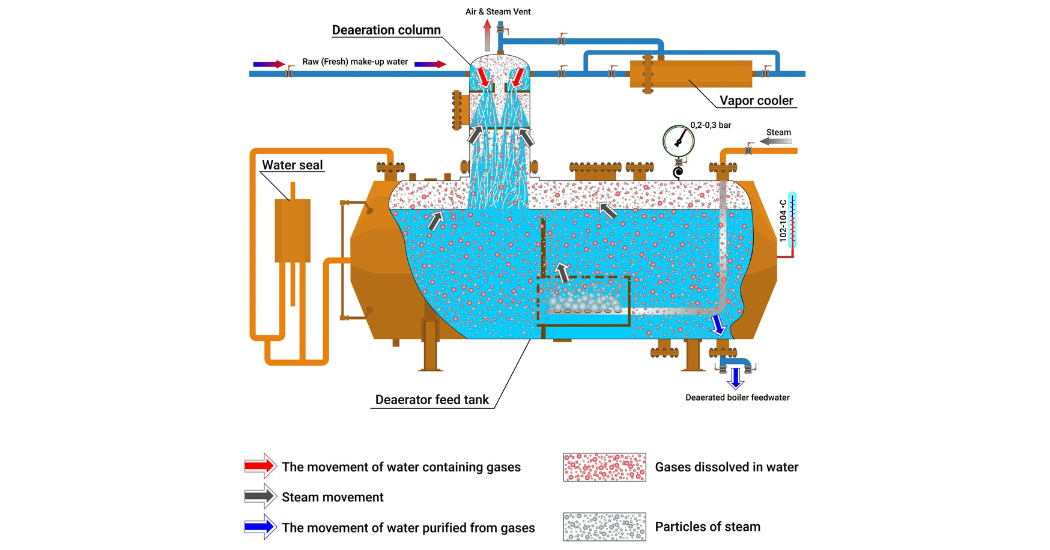
DFT® produces a special check valve called the WLC® Boiler Feed Check Valve that is ideal for this application.
Boiler Feedwater Systems
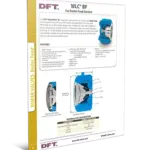 Boiler feedwater systems are challenging due to the potential for high pressure and temperature. DFT® has designed the WLC® Boiler Feed Wafer Style Axial Flow Non-Slam Check Valve that provides excellent performance and protection in boiler feedwater systems. This valve can handle pressures up to 3,705 PSI and temperatures up to 800°F.
Boiler feedwater systems are challenging due to the potential for high pressure and temperature. DFT® has designed the WLC® Boiler Feed Wafer Style Axial Flow Non-Slam Check Valve that provides excellent performance and protection in boiler feedwater systems. This valve can handle pressures up to 3,705 PSI and temperatures up to 800°F.
DFT® can also offer the Excalibur® or GLC® Check Valve designs if flanged construction is required.
Boiler Condensate Systems
The steam produced in many District Energy System Boilers is in a closed loop system, which means after the steam is used to heat water for distribution, the steam is returned to the boiler at the end of its cycle. Typically, that steam begins to condense back into water and is returned via the Condensate Return Lines. Please see the Top Right section of the schematic titled Condensate Return.
Just as with other portions of a closed-loop system, the fluid is meant to travel in one direction only. Condensate lines are typically smaller in diameter and have lower pressure than Boiler Feedwater lines. DFT® produces smaller Check Valves called the SCV® with threaded end connections that are ideal for Condensate lines in Boilers.
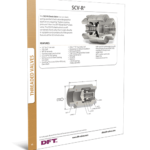 Condensate return systems are integral to boilers. These systems tend to operate at lower pressures and temperatures than feedwater applications. They also tend to have smaller diameter piping. The SCV® can handle pressures up to 2,570 PSI and temperatures up to 510 °F depending on the materials of construction and Cold Working Pressure ratings.
Condensate return systems are integral to boilers. These systems tend to operate at lower pressures and temperatures than feedwater applications. They also tend to have smaller diameter piping. The SCV® can handle pressures up to 2,570 PSI and temperatures up to 510 °F depending on the materials of construction and Cold Working Pressure ratings.
The SCV® provides excellent performance and protection in boiler condensate systems.
DFT® has many types of check valves designed for use in steam and steam condensate systems, depending on the size, flow, and temperature of the application.
DFT® has explored several different Check Valve applications, including Natural Gas delivery, High-Pressure Boiler Feedwater, and lower-pressure steam to condensate return. Once the hot water is generated, it is ready for distribution in the university piping system.
General Piping Systems
Water in piping systems presents its own challenges. The main challenge is how to prevent Water Hammer. DFT® makes Axial Flow Spring Loaded Silent Check Valves. These specially designed valves are designed to eliminate and/or greatly reduce water hammer.
Water hammer is generally recognized as a banging or knocking sound inside the pipes after a pump shuts down. The shocks of this phenomenon can damage pumps, pipes, and surrounding equipment over time, resulting in leaks, corrosion, and poor system operation. By preventing these shock waves, silent check valves eliminate the substantial damage that would otherwise occur throughout the system due to water hammer.
Installing DFT® Axial Flow, Spring-assisted, Non-Slam Check Valves results in safe and silent operation of the hot water and chilled water piping distribution systems. No rattling of pipes, no damage to equipment. When installed properly, due to the silent nature of these valves and the prevention of Water Hammer, you will never know they are there.
What sets DFT® check valves apart from other check valves is the engineered spring-assist technology that prevents reverse flow, reduces the potential for water hammer and vibration, and protects pumps and other high-value equipment. Additionally, the reliability, low maintenance, and long service life provide long-term savings and superior performance.
DFT® makes many styles of check valves that can be used in piping systems. The choice will depend on the diameter of the piping systems, the required end connections (Flanged, Butt Weld, Wafer Style, or threaded style), and the materials of construction.
Download specification sheets of the different styles of DFT® Axial Flow Non-Slam Silent Check Valves from our resource library, or contact DFT® to discuss your needs.


